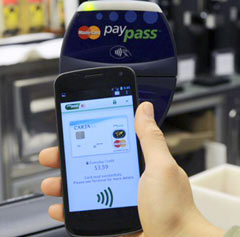 We’re not due to see a re-up of the iPhone until September, most likely the week of September 20th. The next iPhone will undoubtedly be revealed at an Apple event two and a half weeks earlier. That’s just the cycle of the iPhone. Since we’re currently in the “iPhone 5s” days, history suggests that the next iPhone will in fact be an iPhone 6.
We’re not due to see a re-up of the iPhone until September, most likely the week of September 20th. The next iPhone will undoubtedly be revealed at an Apple event two and a half weeks earlier. That’s just the cycle of the iPhone. Since we’re currently in the “iPhone 5s” days, history suggests that the next iPhone will in fact be an iPhone 6.
This almost certainly means a more significant hardware upgrade then the TouchID fingerprint scanner and faster processor we received with the iPhone 5s. But how much new technology is still available?
Whether Apple loyalists want to admit it or not, Android typically paves the way for new iPhone features. As it’s been proven time and time again, Android gets it first and Apple gets it right.
The one feature that Android has now done for going on two years, and heck even Windows Phone and Blackberry devices have done it too, is NFC. Near Field Communication is the technology that allows devices to talk to each other, or scan “NFC tags” for more thorough information than a barcode or QR code.
At this year’s International CES, the CEA (the group that puts on CES) went the NFC route with badges this year, rather than issuing a bunch of perforated tickets as done in years past. When the thousands of press members arrived in Las Vegas for the show last week we got one badge, and then a glossy card that indicated what kind of pass we had. Where we normally receive several tickets for CES Unveiled, multiple lunches and a backpack, this year CEA staff was able to keep up with us via NFC. NFC was able to tell the man stationed at the press luncheon whether you had eaten the box lunch for the day or not. Same holds true for the women passing out the backpacks.
NFC can also be used for point of sale, as Google Wallet has shown us now for two years.
Our good friend Russell Holly at Geek.com reported on two patents Thursday issued to Apple. The first patent showed off a way to gift things through the iTunes store by tapping one iPhone to another. This is of course the exact same thing as “bump” for Android devices.
The other patent explained a system for handshaking with a payment terminal, the way that Speed Pass and Google Wallet, currently allow.
Until now Apple has shyed away from NFC. It was widely rumored last year that Apple was working on their own proprietary system for mobile payment. Many believed that the company wanted to do something that integrates their Passbook functionality with mobile payments. That could still hold true, just incorporating NFC as a conduit for actually making the payment.
When coupled with TouchID the Apple mobile wallet ecosystem may prove more secure than it’s other smartphone OS counterparts. In an effort to constantly want to give customers more to look forward to, NFC may have always been in the cards for the next iteration of iPhone, but they wanted to introduce the TouchID first.
But, when you consider Holly’s experience with NFC via other operating systems, he does have a point in that a plastic case makes it easier for NFC to interact, over say, the metal casing of an iPhone 5s. Apple introduced the iPhone 5c this past year as well, it has a cheaper plastic casing. The problem with the iPhone 5c though is the fact that it didn’t receive the reception that Apple had expected. More Apple users went with the 5s than it’s cheaper counterpart.
Is it in the production quality? Could Apple decide to do away with the metal casing all together in order to accommodate NFC and bring the overall cost of the device down a little bit?
We’ll know in about nine months.

